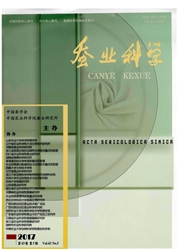

 中文摘要:
中文摘要:
芽孢杆菌产生的非核糖体肽主要有脂肽、多肽、线状聚酰胺物等类型,其生物合成是通过“硫模板多聚酶机制(thiotemplate multienzyme mechanism)”的多功能酶复合系统进行的,并经甲基化、酰基化、糖基化、杂环化和环化等进一步修饰而成。特殊的生物合成机制决定了非核糖体肽具有氨基酸组成及分子形式复杂、分子量较小、理化性质稳定、生物活性多样等特点,同时表现出了对病原微生物不同的抑、杀菌机制。非核糖体肽作为人类丰富的新型抗菌药物资源,在植物病害的生物防治、人类和动物疾病的治疗等方面显示了诱人的前景。研究芽孢杆菌及其产生的非核糖体肽在蚕业上的应用,有利于绿色、生态蚕业的发展。
 英文摘要:
英文摘要:
Nonribosomal peptides produced by Bacillus mainly include lipopeptide, polypeptide, linear polyamide and so on. They are synthesized by employing multienzyme complexes according to thiotemplate multienzyme mechanism and further modified by methylation, acylation, glycosylation, heterocyclization as well as cyclization. Directed by special biosynthesis mechanism, the nonribosomal peptides represent multiplex inhibition or sterilization mechanism and some peculiar characteristics including complex amino acid elements and molecule structure, low molecular mass, stable physicochemical characteristics, and diverse biological activities. As the potential source of novel antibacterial substances, nonribosomal peptides indicate great prospect in biological control of plant diseases and treatment of mankind and animals. The application of Bacillus and their nonribosomal peptides to sericulture would make it more ecological.
 同期刊论文项目
同期刊论文项目
 同项目期刊论文
同项目期刊论文
 期刊信息
期刊信息
